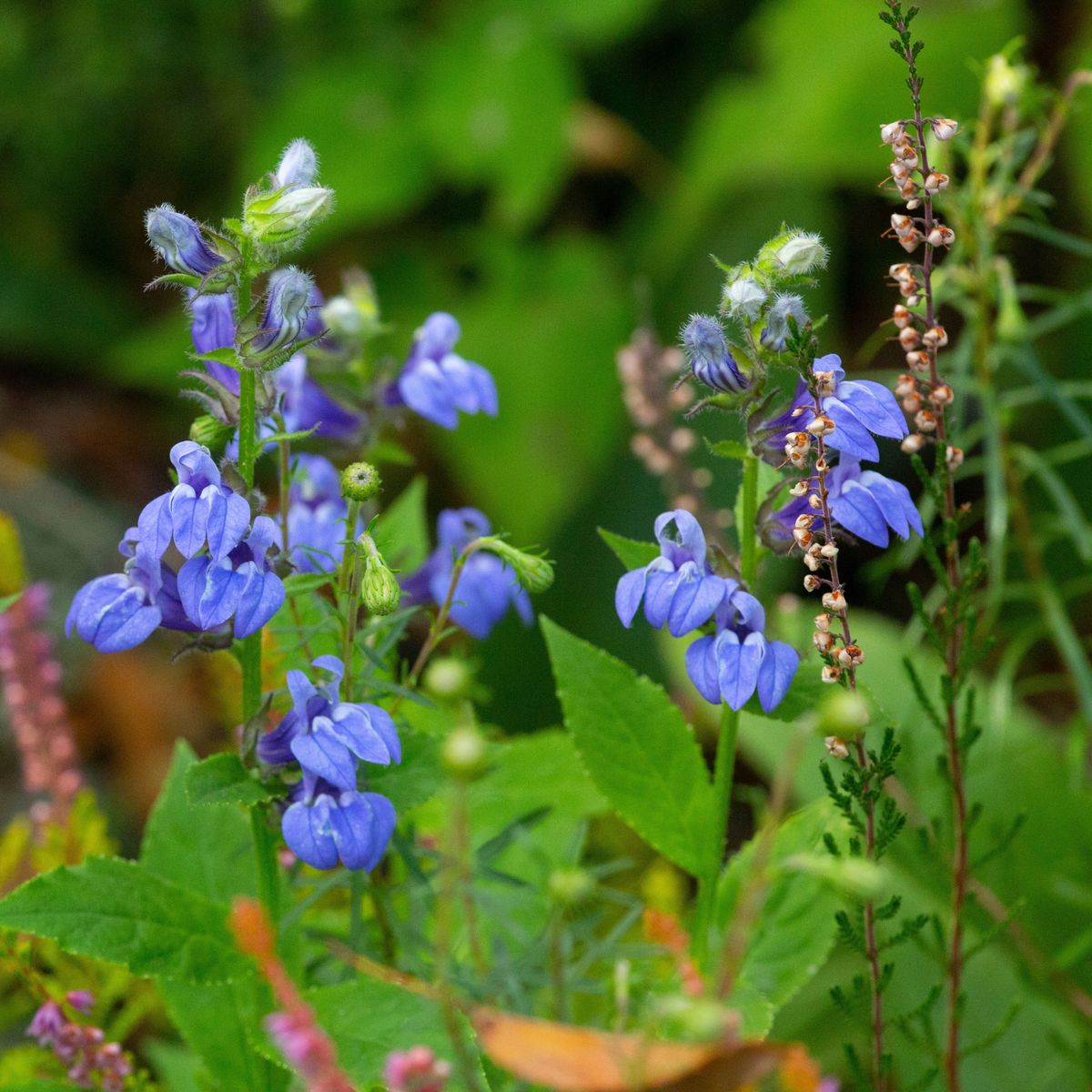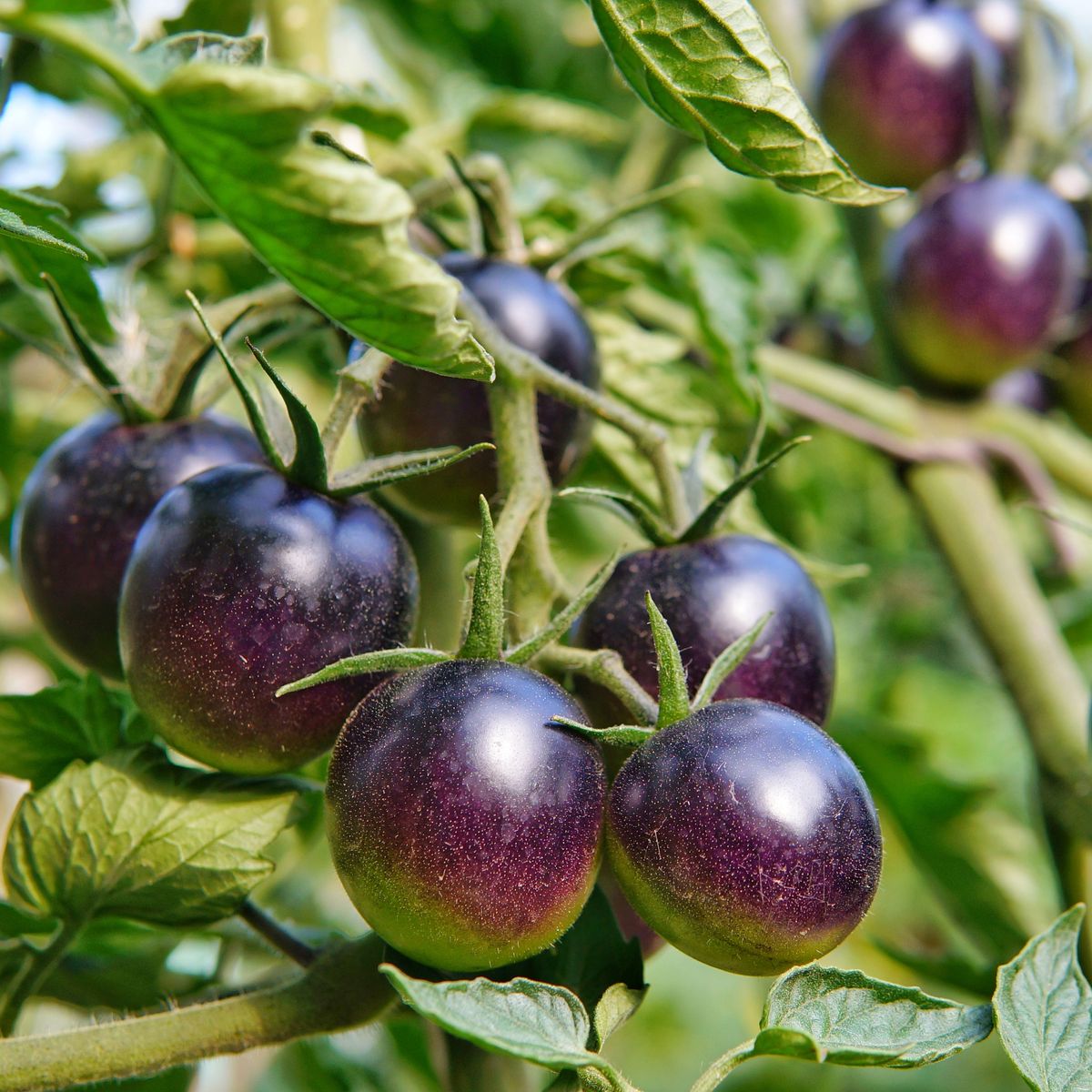The form and size of a herb garden is determined by the interest these plants hold for the individual. It can be a tiny border of commonly used culinary herbs such as mint, parsley, sage and thyme or an elaborate garden designed to house a wide collection of herbs. Many plants could legitimately be included in one of these large gardens, so that the decorative effect can be the primary consideration when drawing up the plan. For success, a sheltered part of the garden should be chosen. Herbs are always at their best in warm still air and a hedge can be planted to provide both seclusion and decorative completeness to the garden. Choose rosemary, lavender, sage or roses for this hedge. A good temporary shelter can be provided quickly for a season or two by annual sunflowers, until the newly-planted hedge attains a useful size. A gently sloping site often affords the best position as drainage is essential unless a bog garden proper is to be a feature of the herb garden.
Borders
Small herb borders, as part of the vegetable garden, to provide flavorings for culinary use, are best treated like vegetable borders. The plants should be set in rows so that the hoe can run between them as regularly as it is in the remaining part of the kitchen garden. In its widest sense the herb border can be virtually a herbaceous border and include verbascum, chicory, catmint, delphinium, artemisia, tansy and foxglove; then it needs to be planned just as carefully as a perennial border is planned. The herb borders near the alpine house at the Royal Horticultural Society’s garden at Wisley, Surrey, provide good examples of the medium-sized border and are confined to sage, balms, thymes, alliums, rue, mints, salvias, borage, marjorams and angelica. It is obvious that the decorative value is less than when the choice of plants is extended to include many flowering plants. The decision as to what to include, or exclude, is determined by personal choice as well as available space.
Natural orders
The natural order garden is a favorite way of assembling herbs and examples can be seen at many botanic gardens, including Kew and Oxford. The principle is to arrange plants of one natural order in each bed, making a representative collection as a whole. The idea can be extended according to the selection of plants and each bed can be designed as a small island border, though naturally this is difficult for the Umbelliferae and labiates, which all seem to have such strong family resemblances.
Collections
The collection may be limited to medicinal herbs, such as belladonna, digitalis, aconitum, betony, comfrey, or may be a cook’s corner, or merely include the sweetly-scented and aromatic plants beloved of bees and preserved as potpourri. Similarly, one may build up a Bible garden, growing only plants mentioned in the Bible, or a Shakespeare garden including only those plants the poet mentioned.
Designs for herb gardens
Individual beds lend themselves to a checkerboard effect where small square beds are formed in staggered rows, the alternate spaces between being paved or set with chamomile to form carpets. This draughtboard design makes a good foundation for many kinds of herb garden and is effective when each bed contains a single kind of plant. This sort of herb garden is to be seen at Lullingstone Castle near Eynsford in Kent and was planned by the late Miss Eleanor Sinclair Rohde. Larger gardens can be planned on a more ambitious scale. A favorite approach is to have a central feature such as a sundial or bird bath, bee hive or even a circular chamomile or thyme lawn forming the hub of a wheel and long narrow beds of individual plants forming the spokes. In a plan such as this, the juxtaposition of various plants requires a little forethought, otherwise ill assorted neighbors can mar the general charm of the idea.
Harvesting and drying
The art of harvesting and drying herbs to retain the flavor and aroma is one that can be acquired only by practice. The essentials are to harvest at the right time and in the right condition that part of the plant to be used, say seed, leaf or root, and to dry the material at the correct rate. Our climate is too humid to allow for drying in the open without deterioration. The object in drying is to dehydrate the plant by good ventilation. The process is, therefore, best undertaken in a well-ventilated, shaded or dark place where a temperature of not less than 70°F (21°C) can be maintained.
The part of the plant required should be collected when it is ready, handling a small portion only at a time. Put the material into flat boxes or garden trugs when it is cut in the garden and never collect more than there is time to spread out for drying immediately. Material left about in heaps starts to deteriorate immediately because the essential oils escape. Many umbelliferous plants, notably sweet Cicely, flag at once and cannot really be dried. In general the best time to harvest leaves is usually just before the flowers are fully open and a sufficient number of leaves must be left on the plant for it to continue to function. Flowers such as lavender and bergamot are at their best when they are fully open, but to catch the essential oils, gather them just before maturity, and select unblemished ones. Seed is ready when it is mature and needs merely to be cleaned of seed pods and husks when dry. Roots, naturally, are lifted at the end of the season. By gathering on a dry day, as soon as the dew has gone, the least amount of moisture adheres to the plant material. One kind of material should always be kept separate from another and a minimum amount of handling is important to avoid bruising.
Some plants such as sage can be hung in small bunches in an outhouse or porch to dry, but it is far better to treat all material to a quicker drying method. Domestically the most suitable places are airing cupboards, darkened greenhouses, the plate-warming compartment of a cooker, a slow oven (with the door left ajar), a clothes drying cabinet or a spare room provided with electric heater and ventilator fan. All these places need to be dust free. Flat cardboard boxes without lids, sheets of brown paper, hessian, muslin or nylon tacked to wooden frames to make a tray, may be used to hold the herbs during the process. Wire netting is not suitable, unless it is covered with muslin, because the metal can damage the plant material. The ideal temperature is between 70 and 90°F (21 and 32°C) and ought not to exceed 100°F. An air thermometer is a help and indeed a necessity where any quantity of herbs are to be treated. The ideal is not to have the temperature so high that the plants blacken (parsley does not seem to lose its color in this way).
A minimum of handling should be the rule during the drying process; a daily turning should be enough because the amount of material being treated should be small in relation to the drying accommodation available. Maintain a temperature around 90°F (32°C) for the first twenty-four hours then reduce it to around 70°F (21°C) until the process is complete. There should be only a faint aroma; if the scent becomes strong this is a certain indication that the temperature is too high. Fresh material ought not to be introduced into the drying chamber before one operation is complete because this increases the humidity, although sometimes this cannot be avoided. The exact time taken over the process is difficult to estimate and will vary according to the space, ventilation and amount of material being treated. Leaves and stems should be brittle and rattle slightly when touched but they should not be so dry as to shatter to powder when handled. Should the stems bend and not break under the fingers then they are not quite dry. Roots need to be brittle right through and not have a fibrous or spongey core. The amount of water in a growing plant is as high as 80 or 90 percent. So to obtain an appreciable amount of dried material for winter use a comparatively large amount of the fresh plant needs to be harvested over a period.
Storing
The essential requisite is that the dried herbs are stored in such a way that reabsorption of atmospheric moisture is impossible. This can present quite a problem in our climate. First allow the herbs to cool after drying, then chop, rub or sieve them as required discarding stems and other chaff. Pack them away at once to prevent dust from being collected. Glass jars with screw tops are suitable only for small quantities of material destined for immediate use. Otherwise, metal containers or foil lined boxes are suitable, but wooden jars with either tight-fitting lids or screw caps are ideal. Plastic bags firmly closed with a sealer can be stored in boxes, but it is always a good plan to keep each kind of herb absolutely separate from another.
Freezing
Several culinary herbs, particularly the soft-leaved ones such as mint and balm can be successfully stored in the deep freeze. Treat them separately, and store in plastic bags after blanching. Chives, mint, balm, fennel, parsley and sorrel can all be kept in this way. Wash the plants well under running water, plunge them for about thirty seconds into boiling water, cool them under the cold water tap, put them into plastic bags, seal and store until required in the deep freeze. They require very gentle thawing before use.











